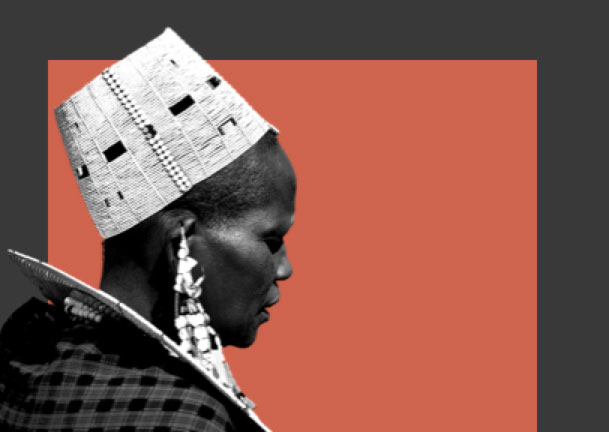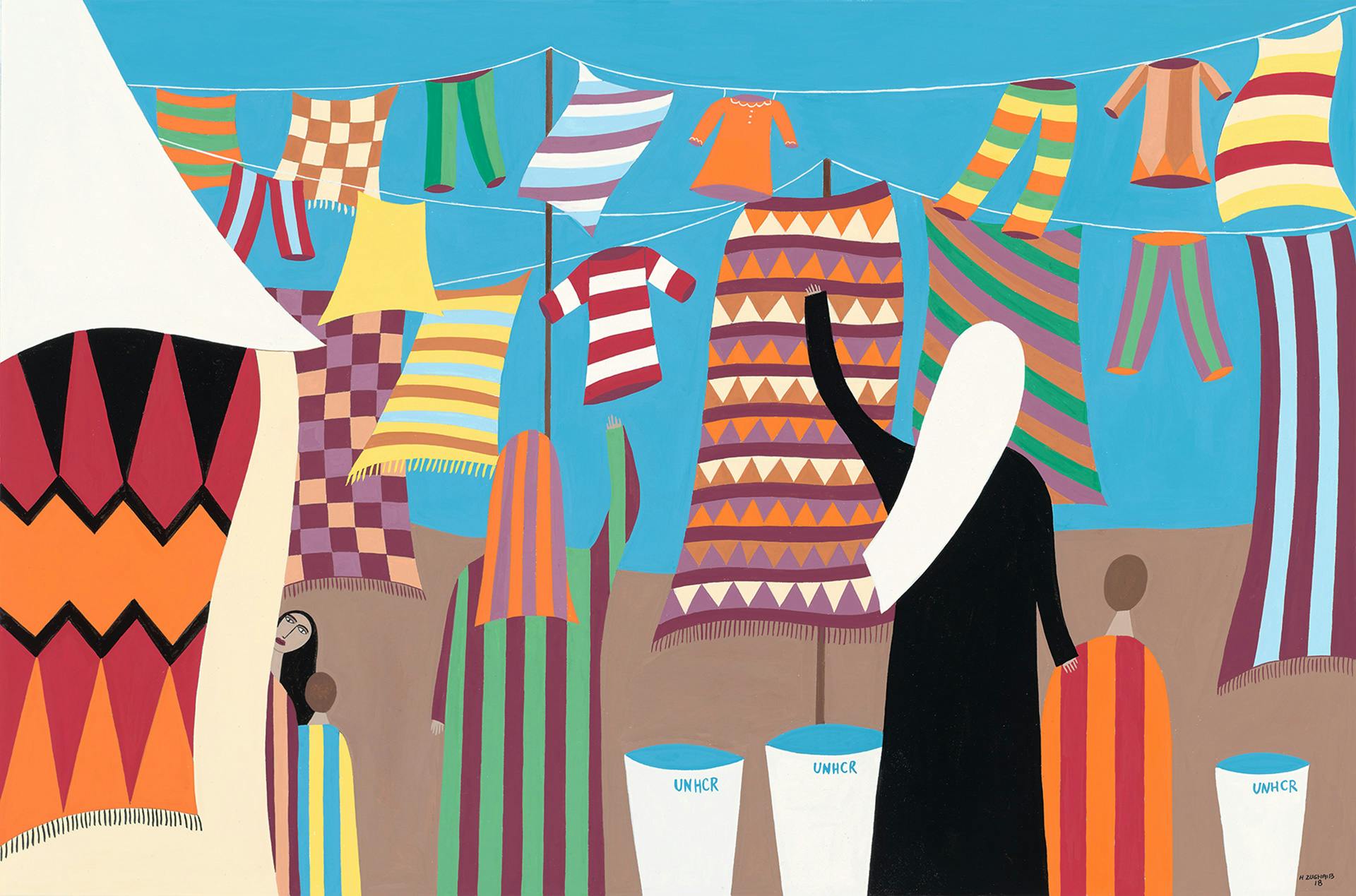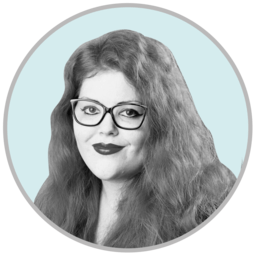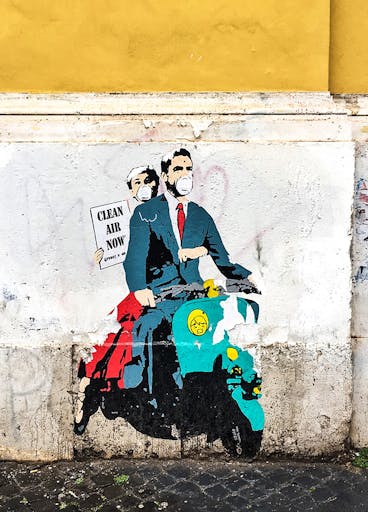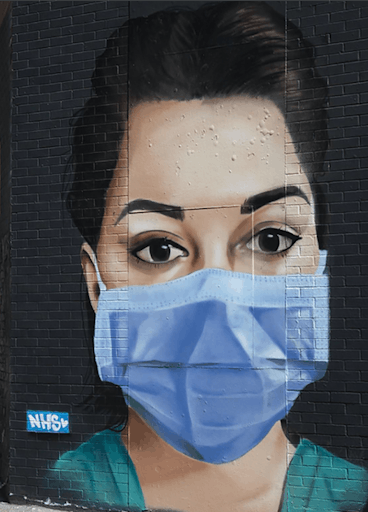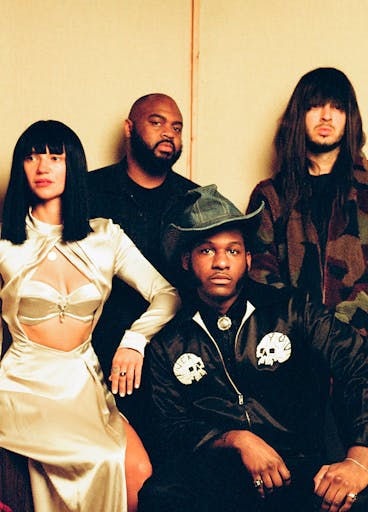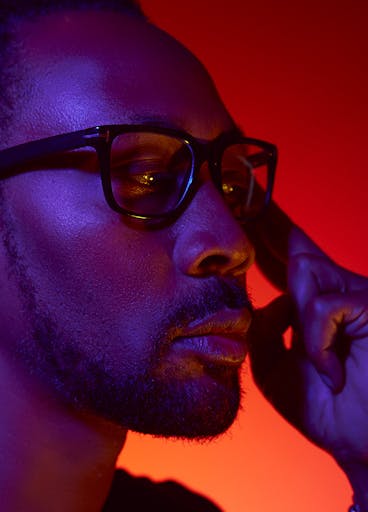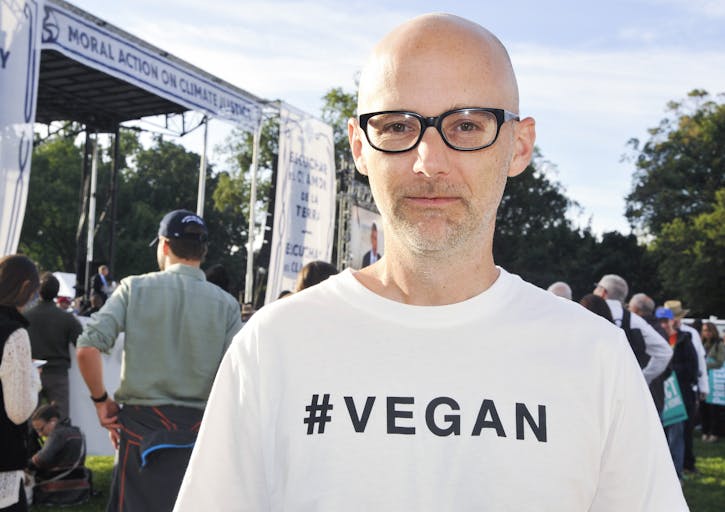Through the vivid colors of her paintings, Lebanese-born visual artist Helen Zughaib engages with themes of displacement and fighting for acceptance. Twice evacuated from her home city of Beirut as a child, Zughaib feels personal empathy for the migrants, immigrants, and refugees that often appear in her work. Zughaib stresses that we are all connected, and through her art, she has found a way of assimilating herself while garnering acclaim along the way.
Were you always interested in visual art? How did your displacement from Lebanon affect you in terms of needing to tell your story in an artistic way?
Yes, I truly was. Surrounded by pattern, color, and that particular light in the Middle East, it was difficult to escape both the beauty and the chaos of growing up in the Arab world. Nor did I want to! From the colorful, noisy souks and marketplaces, to the Oriental rugs on our floors, geometric tiles, and paintings from prominent Iraqi and Lebanese artists, I was immersed in the rich and complex beauty of pattern, color, and subject.
I feel that when one is involuntarily forced to leave their home—in our case, it was due to the civil war in Lebanon—left behind are suitcases . . . suitcases full of memories, dreams, stories not yet told. We left everything, including my father, who joined us months later in our new home in Paris. There remains a yearning and nostalgia for home, or at least the idea of home. No matter where you end up re-creating that home, it is never the same again. I feel like pieces of our lives and our selves, were left, never fully regained. In a way it creates an opening, a void, to be filled with memories, stories, and remembered truths about a particular time in our lives, though somehow never able to be completely filled.
I think actually, the series of paintings I did called “Stories my Father Told Me,” about my father’s childhood in Damascus and Lebanon, are possibly a way to piece that “lost” past together again—an attempt to both understand the past and bring it squarely into the present, and to hold on tight so they cannot slip away again. That series began in early 2003 and continued until just a few years ago.
You use mostly bright colors in your paintings and almost pop-art-like figures. Are these a means of skipping the subtlety and putting the plight of refugees out in the open? Do you find that this makes the images more accessible to uninformed viewers?
I think that many issues I am interested in amplifying through my work are difficult and painful—some, as in the current crisis and war in Syria, are even harder to give “voice” to. I see two parts to the “subtlety” you refer to. Yes, with my signature bright and hopeful color, strong patterns, definable shapes and scenes, these do shout to the viewer to see the injustice and tragedy of what I am painting.
It is in some ways easier to look at, more palatable to take in—the horrors of this war, and ensuing refugee crisis, in a palette of beauty and bright color. On the other hand, creating my paintings as a work of beauty first initially attracts the viewer, and only then can they really “hear” what I am saying. So in a way, this is almost a subversive act on my part, using beauty and simplicity as a tool to get to the deeper and more painful issues I want to bring up. To work against the immediate aversion such harsh realities confront us with, and only then being able to face the truths, so often unbearable.
Your most recent exhibition of works, entitled “Syrian Migration Series,” was influenced by Jacob Lawrence’s own "Migration" series (1940–1941), which dealt with the migration of African Americans to the North from the South. How did Lawrence’s work inspire you to paint the ongoing effects of the Syrian Civil War, and how important is it for you to examine the past while coming to grips with the current reality of Syrian refugees?
I have long admired the work of Jacob Lawrence. When the massive Syrian refugee and displacement crisis began, I thought of his first panel in 1940, a painting depicting the migrants moving through the railroad stations of New York, Chicago, and St. Louis. The first painting in my own "Migration" series was the counterpart to Lawrence’s panel—my painting depicting the migrants streaming through entry points of Turkey, Greece, and Germany. That initial painting began my series, and as I “followed” the Lawrence series, I could see many similarities to the Syrian migration crisis. Leaving home to escape the injustices of the segregationist Jim Crow south, the desire for education and better opportunities in the north, led to almost six million African Americans making their way to major cities in North America. They were not fleeing war per se, as in the Syrian migration, but were desperate for a better life elsewhere. The basic needs of people for safety, shelter, food, and water are universal. Interestingly, the sixtieth and final panel in the Lawrence series simply says, “And the migrants kept coming.” It is almost sadly prophetic that nearly seventy years after he painted that last panel, we are in the midst of the largest refugee/migrant crisis of our time, with over 13 million Syrians displaced worldwide . . . history repeating itself.
Your work is part of several impressive collections, including those of the Library of Congress and the White House. As an artist living and working in Washington, DC, how important is it to be a part of the ebb and flow of such a political city? Do you find, what with our current political situation, that you’re more inspired than ever to discuss protest and political uprising in your work?
I am indeed very honored to have my work in such esteemed collections. Interestingly, the paintings that are housed in those institutions reflect ideas of unity, democracy, dialogue with the “other,” mutual respect, and acceptance of our differences, especially between East and West. These values and ideas are even more relevant in light of the current political scene of divisiveness and anti-immigrant policies that seem to be gaining traction not only in the United States, but in Europe as well.
Your collection “Arab Spring/Unfinished Journeys” documented the anti-government protests, armed rebellions, and democratic uprisings that have spread across the Middle East since late 2010, but you did so with a modernist style almost in the vein of Picasso, or even, as with your collection “Changing Perceptions,” of Roy Lichtenstein. How do you find common ground with disparate themes such as war and pop art, or whimsy and irony?
I think that much of my work straddles this basic divide between East and West. As an Arab American, I live with this “divide” and seek to find ways to bring together these competing sides of me, and by extension, of the larger political issues that surround us. In several of my paintings and series, I purposely use recognizable Western artists such as Picasso or Lichtenstein in combination with motifs or images that are more closely linked to the Middle East, to create a “new” way of looking at an issue, and to flip negative stereotypes around, even, as you say, sometimes with a bit of whimsy or irony. I think both these artistic “weapons” are useful in furthering my point of view. And in a way, as I mentioned earlier, it is one way of reaching the viewer at a place they can relate to initially, then opening the door for a new conversation or way of perceiving the larger, more serious issues.
I do think that the human spirit is ultimately resilient . . . so amazing in the face of such tragedy and deprivation. Ultimately, I would say my goal as an artist is to visually “document” my environment in a way that creates empathy for those experiencing the horrors of war and displacement, and to make it clear that it is only a simple bit of luck, a twist of fate, that separates “us” from “them.”

